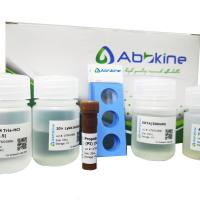Detection of Aldehydic DNA Lesions Using Aldehyde Reactive Probe
互联网
623
In living cells, reactive oxygen species (ROS) such as superoxide anion, hydrogen peroxide (H2 O2 ), and hydroxyl radicals are constitutively produced endogenously and also induced by exogenous agents including ionizing radiation, ultraviolet (UV) light, and a various redox cycling chemicals including polycyclic aromatic hydrocarbons. Massive production of ROS that overwhelms cellular defense systems can result in serious outcomes such as cell death. H2 O2 is produced at a relatively high rate as a product of aerobic metabolism. In the presence of transition metals (Fe2+ and Cu+ ), H2 O2 can generate hydroxyl radicals via the Fenton reaction (1 ). The highly reactive hydroxyl radical can induce protein modification, lipid peroxidation, and DNA damage (2 ,3 ). Although the heterocyclic bases of nucleic acids are important sites of free radical-mediated alteration, such as 8-hydroxyguanine (8-OHG) (4 ), the sugar-phosphate backbone is also highly vulnerable to attack. Abstraction of a hydrogen atom from each carbon from deoxyribose produces a carbon-based sugar radical that can rearrange, resulting in scission of the nucleic acid strand, deoxyribose fragmentation, as well as formation of base loss lesions, so-called apurinic/apyrimidinic (AP) sites (5 ,6 ). These deoxyribose lesions frequently contain aldehydic moieties; however, they have been difficult to examine, mainly owing to the large variety of products, as well as their chemical instability, even at mild temperatures and neutral pH (7 ).









